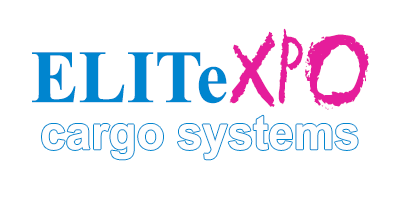8 Critical Details for Accurate Trade Show Shipping Estimates
8 Critical Details for Accurate Trade Show Shipping Estimates
Accurate shipping estimates are built on little details that most of us can often take for granted. Receiving incorrect or incomplete data during the quoting process can lead to unforeseen charges, as well as lead to potential errors in the shipping process. Here are some of the most common areas that should be covered when planning for a successful shipping experience:
• Addresses – Having complete address information is best for accurate shipping cost determination. If you do not have the full address of the pickup and delivery locations, try to at the very least provide City, State and Zip Code. Keep in mind though, that if the freight is being picked up from or delivered to a remote destination, an address change could lead to higher costs. There’s a big difference between a pickup in downtown Milwaukee and a pickup at the Kalahari Resort in the Wisconsin Dells, a 120 mile difference. In addition, if the freight is coming from a residential location rather than a business, or you know a full-size truck will not be able to access the freight, it is important to include these details.
• Truck Level Dock Facility – Advising us if your location has a truck level dock facility is critical to not only providing an accurate shipping estimate but allows us to determine if additional equipment will be required to load/off-load the freight. It also lets us know if a driver will be able to get the freight onto his truck without the use of a liftgate or an additional laborer. A truck level dock means a tractor trailer can back his truck directly up to your warehouse floor and your forklift driver can load the shipment directly onto the back of the truck. For more information and to see a demo of what a truck level dock facility is, go to https://youtu.be/lZojsGBaMVw.
• Show Site vs. Advance Warehouse – If time allows, going to the advance warehouse is potentially a money saving option. This eliminates inbound convention fees and special delivery times. However, if the freight must deliver direct to show site, it’s important to have accurate delivery dates and times as well as the booth # and the company name you are exhibiting under. (See our blog post on this topic for more details.)
• Dates – Pick Up /Delivery dates are very important in order to determine routing options. For example, allowing 10 business days for shipping is considered Economy Ground service, 5 business days for shipping is considered Deferred. Delivery in less than 5 business days changes the service level and will affect the shipping costs and may require shipping by air. Providing ELITeXPO with a copy of the Exhibitor Manual or at least the show’s Quick Facts, will be extremely beneficial in allowing us to help you with these date and time parameters.
• Time – Does the shipment require pick up/delivery at a specific time? If you cannot allow for a 6-8 hour window for availability, additional charges may apply. Picking up and delivering at a tradeshow venue will usually require very specific time frames which will raise your costs. If a shipment needs to deliver at 8am, we will want to have enough service days to allow the shipment to arrive the day prior. If the event has assigned target move-in and/or move-out times, it is critical that this information be conveyed to your carrier. A driver arriving at a targeted show at the wrong time due to inaccurate information will cause additional drayage fees from the show decorator.
• Dimensional vs Actual Weight – When doing estimates, it’s important to know the dimensions as well as the weight of what will be shipped. Freight charges will be based on the higher of the two. Dimensional weight, which is the same thing as volume weight, is calculated using the following formula:
Length x Width x Height x Number of Pieces divided by the Dim Factor.
o US Domestic Dim Factor = 194
o International Dim Factor = 166
o International Airline / FedEx Dim Factor = 139
o Certain Ground Carriers = 250
For example: For example: 1 crate x 103″ x 58″ x 39″/ 194 dim factor = 1201# Dimensional/Volume Weight for a shipment from Chicago to Boston.
This information is critical for international shipping estimates.
Conversion Info, If Needed:
o Pounds x .453592 = Kilos
o Kilos x 2.20462 = Pounds
o Centimeters x .393701 = Inches
o Inches x 2.54 = Centimeters
• Special Logistics Requests – If your shipment requires load straps, blanket wrap, inside pick up, lift gate equipment as just a few examples, could affect the cost of your shipments. Some other questions to consider are the type of truck needed (ie. a full truckload, flatbed, or even refrigerated / temperature controlled transport.
• Insurance – We have available for purchase “All Risk” cargo insurance specifically designed for Trade Shows. If insurance is purchased on the shipment into AND out of the event, your exhibit properties are even covered while on the show floor! The cost for insurance is based upon the invoice value of all goods being shipped to/from the trade show. Therefore, we would need to know the total value in order to properly estimate the insurance costs. If you choose NOT to purchase insurance, ELITeXPO’s liability is limited to $.50 per lb of each piece or $50 per shipment, whichever is greater.
Value is also critical for providing estimates for international shipments.
In Conclusion
The best advice that I can give for getting an accurate shipping estimate is that every detail counts. The more information that you can provide to us about the shipment, the more accurate your estimate will be and the better potential you’ll have for an on-time and in-tact arrival at the trade show, once you book the shipment.

